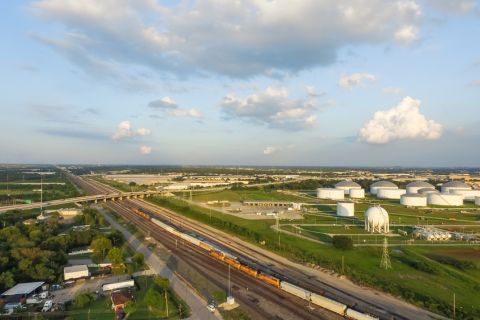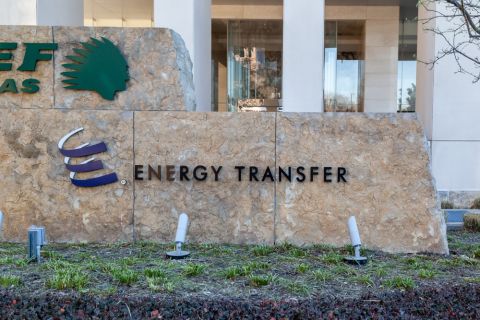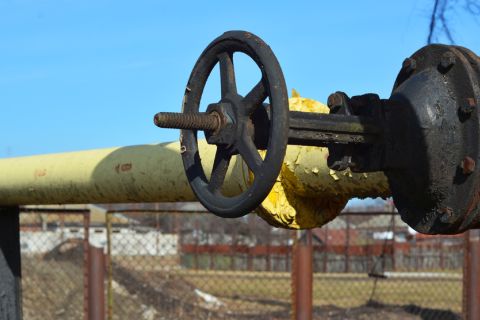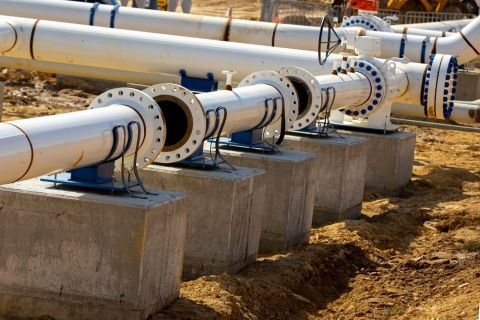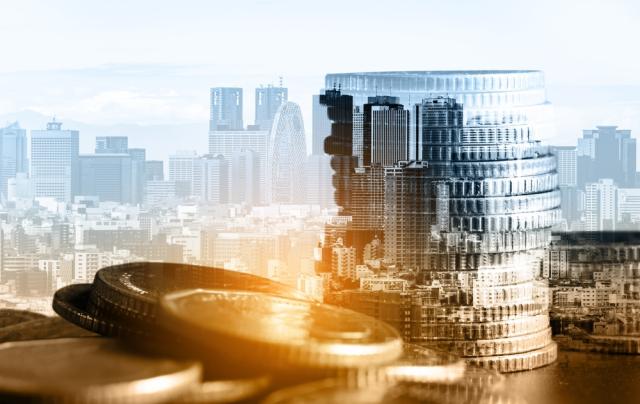
Paris-headquartered Air Liquide said its investment backlog hit a record high of $4.2 billion euros (U.S.$4.4 billion), up from $3.4 billion euros in third-quarter 2022. (Source: Shutterstock)
Despite rising interest rates, higher power costs in the U.S. and global economic uncertainty, two of the world’s top industrial gases companies, which include hydrogen production among their specialties, reported a growing backlog of projects as the clean energy movement continues.
U.K.-based Linde said Oct. 26 its backlog increased by $300 million to $8.1 billion during third quarter 2023. The backlog includes $4.5 billion in sale of gas projects, or investments supported by long-term supply agreements.
“We do not put MOUs and LOIs into the backlog. A backlog is only recognized when we have a signed contract in place with guaranteed cash flows for the future contracted in,” Linde CEO Sanjiv Lamba said. Linde expects to see 1%-3% of earnings per share (EPS) growth coming from its backlog.
A day earlier, Paris-headquartered Air Liquide said its investment backlog—defined as the cumulated industrial investment value of projects decided but not yet started— hit a record high of $4.2 billion euros (U.S.$4.4 billion), up from $3.4 billion euros in third-quarter 2022. It is considering spending about 3.4 billion euros in the next 12 months with more than 40% of the projects linked to the energy transition.
“For every project that we are building, we have a strong signed contact with a known customer. We are not building and [waiting] for the market to come,” Air Liquide CEO Francois Jackow said on a call with analysts. “We are in an inflationary environment, so we have strengthened both our terms and conditions with the customer and especially to make sure that systematically we include an index on the capex during the construction phase,” something that wasn’t necessary for the industry in the past.
The healthy backlogs are expected to help maintain growth for both companies as each look to take on more hydrogen projects in the U.S. where efforts are underway to develop regional hydrogen hubs. Hydrogen, which has near-zero greenhouse-gas emissions, is seen as a solution to climate woes, serving as a route to decarbonize hard-to-abate sectors and reduce reliance on fossil fuels used in transportation.
Getting bigger, risks remain
Air Liquide is a partner in six of the seven projects recently selected for negotiations by the U.S. Department of Energy to receive a share of $7 billion to establish hydrogen hubs.
“Clearly the main driver here is to really accelerate commercial deployment of hydrogen in use for mobility and use for decarbonizing industry and even for power generation,” said Mike Graff, executive vice president for Air Liquide.
He added that the company has the technologies necessary to deliver in various markets—be it renewable power for mobility or utilization of autothermal reforming technology with its Cryocap for carbon capture technology.
“In addition to that, we’ve got infrastructure associated with a lot of these key hubs that allow us to play within all of the aspects of those markets and … for every type of technology that I mentioned, we can already point to something that’s in operation at a commercial scale,” he added.
Industrial gas giant Linde is also in on the U.S. hydrogen hub action, including as a partner for the California’s Alliance for Renewable Clean Hydrogen Energy Systems (ARCHES) hub. Liquide and Air Products are also among the hub’s partners.
“How we think about our business and also the development of the business going forward is all built around network density, and that’s the acid test that we apply to the development around the hydrogen hubs as well,” Lamba said on the Oct. 26Linde’s earnings call.
Growing backlogs, however, don’t come without risks.
A Barclays analyst on the call, inquiring about Linde’s risk appetite, pointed out some pullback in the clean energy space, caused perhaps by “a bit more economic rationality in some green ambitions.”
Lamba acknowledged risk in the market and reiterated the company’s view.
“We’ve always maintained that technology and scale up, resulting in projects that have a competitive position, are the ones that are going to move forward,” Lamba said. “And I want to reiterate today that we are seeing many of those projects that we’re currently developing on track for exactly those reasons.”
Linde remains confident about the $50 billion-plus worth of global investment opportunities in hydrogen over the next decade. However, Lamba also remains skeptic regarding the availability of renewable energy needed for electrolysis to produce green hydrogen.
“Obviously, technology and scale up on green is also lacking today,” he said, adding green energy projects will likely be available at scale at cost-competitive levels about a decade from now.
Earnings results
Linde again raised its annual earnings guidance this week, bolstered by the global clean energy push that includes investments in hydrogen.
“Clean energy projects continue to progress well as our customers remain committed to decarbonizing their assets,” Lamba said.
The company said it expects EPS to increase 14% to 15%, compared to last year, to between $14 and $14.10. Linde, which unveiled a $15 billion share buyback plan earlier this week, plans to spend about $3.5 billion to $4 billion this year.
The company reported adjusted EPS increased 17% to $3.63 for the third quarter, though total sales dropped 7% to $8.2 billion.
“Capex of $950 million increased 24% from last year, primarily due to project capex spending in support of the $4.5 billion sale of gas backlog,” Linde CFO Matt White said. “As a reminder, the Linde definition of project backlog is unique and the most stringent in the industry. Inclusion requires assured growth, a customer contract with fixed fees and explicit termination provisions to ensure investment returns. Furthermore, this $600 million of base capex includes $320 million of additional growth investments to increase network density.”
Network density, as Lamba later explained, involves leveraging all product economics in a small targeted area where it has customers. It’s something the company intends to build on with its acquisition in January 2023 of nexAir LLC, a U.S.-based independent packaged gas distributor that wants to expand further in southeast U.S.
About 40% of Linde’s project backlog is clean energy and nearly 70% of the projects are located in the Americas. The company committed to grow EPS by at least 10% this year. It expects the growing project backlog to contribute between 1% to 3% of EPS growth, while pricing and productivity is expected to account for between 4% and 6%.
Recommended Reading
Midstream Operators See Strong NGL Performance in Q4
2024-02-20 - Export demand drives a record fourth quarter as companies including Enterprise Products Partners, MPLX and Williams look to expand in the NGL market.
Apollo Buys Out New Fortress Energy’s 20% Stake in LNG Firm Energos
2024-02-15 - New Fortress Energy will sell its 20% stake in Energos Infrastructure, created by the company and Apollo, but maintain charters with LNG vessels.
Post $7.1B Crestwood Deal, Energy Transfer ‘Ready to Roll’ on M&A—CEO
2024-02-15 - Energy Transfer co-CEO Tom Long said the company is continuing to evaluate deal opportunities following the acquisitions of Lotus and Crestwood Equity Partners in 2023.
Summit Midstream Sells Utica Interests to MPLX for $625MM
2024-03-22 - Summit Midstream is selling Utica assets to MPLX, which include a natural gas and condensate pipeline network and storage.
TC Energy, Partner Sell Portland NatGas Transmission System for $1.14B
2024-03-04 - Analysts expect TC Energy to make more divestitures as the Canadian infrastructure company looks to divest roughly $2.21 billion in assets in 2024 and lower debt.


